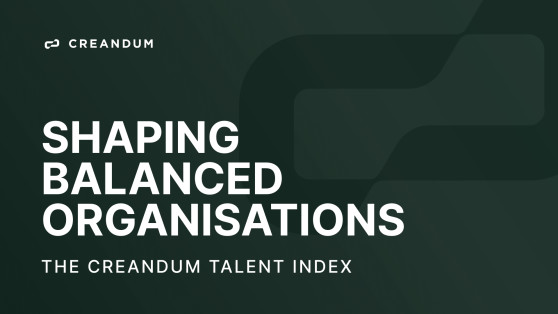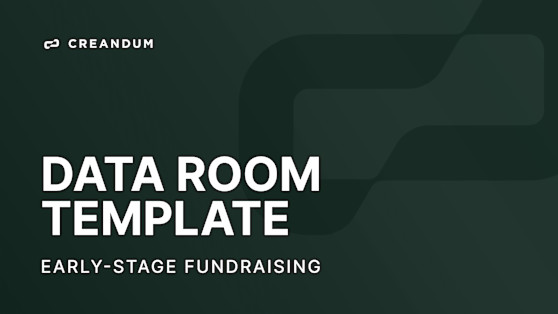Pay Transparency
At Creandum, we spend extended time with founders working through their Compensation practices so they remain competitive. At a certain point, I get the question: Should we have full salary transparency?
It’s a daunting topic, yet with global or remote talent feeling empowered to ask outright alongside the tidal wave of pay transparency laws becoming more common, it’s a necessary conversation to think through. Our European founders typically think about it as they cross the Atlantic, where implementation in some US states is already mandatory.
For European tech founders aiming to lead by example, understanding and implementing pay transparency is not just a legal requirement but a strategic asset. The European Union Directive takes a significant step by aiming to bridge the gender pay gap and promote a more inclusive workforce. This post focuses on Europe, helping you to anticipate roll-out and compliance, underlining its importance and practical steps for implementation.
What is Pay Transparency?
Pay transparency is a series of best practices around complying with the laws and meeting employee expectations. It should help employees understand why they’re paid what they are and how they can achieve higher compensation levels.
New state legislation in the USA and pilot programs in Europe mean that there is a shift away from employers deciding how and why people are paid what they receive behind the scenes towards more transparency, employees knowing what parameters are by role — and forcing employers to institute policies and shift the maturity on your pay philosophies.
A shift to salary transparency can be shown in a few different ways:
The company shares its comp philosophy but without disclosing salary ranges.
Each employee knows the salary range for the banding they are currently in, what is above them, and what the role demands for them to move up.
All salary ranges by level/seniority, job type and geography are shared internally.
All employee salaries are shared internally.
All of the above gives your team insight, not just their salary, and each offers varying levels of increased information. Of course, you can remember to shift to more transparency over time, knowing it is harder to roll back.
The EU Pay Transparency Directive
The EU pay transparency directive is a legislative framework designed to ensure more transparency in pay-related matters, specifically focusing on gender equality. It mandates employers to disclose salary information to promote fair pay for equal work. The directive encompasses several vital requirements: employers must provide pay levels for roles in job adverts, offer pay reports disaggregated by gender, and ensure that employees can access information about pay levels and criteria for determining pay. The ultimate goal is to eliminate the gender pay gap and foster a workplace culture of openness and equality.
Who does this apply to?
The new law will apply to all companies with 100 or more employees of any type, including part-time and contract workers. Two key areas: Pay Transparency and Pay Equity.
Considerations:
Adjust the way founders articulate their pay structures.
Communicate with employees and job applicants.
There is a possible need to give targeted raises over a period to close the gender pay gap.
EU Deadline*: 07 June 2026. Likely implementation in 2025 cycle. *Some aspects of the EU Directive may vary by country within the EU, meaning implementation timelines might differ.
Benefits of Pay Transparency
Firstly, transparency builds employee trust, showing your company values fairness and Equity. In turn, it can boost motivation and job satisfaction.
Secondly, it positions the company as a leader in ethical business practices, enhancing its reputation in the industry and making it more attractive to top talent.
Lastly, compliance with the EU directive, or local USA laws, reduces the risk of legal challenges related to pay discrimination, safeguarding the company against potential fines and reputational damage.
Be Prepared
We recommend founders act as if their company’s salaries are fully transparent, even if not. Ask yourself if you could explain your decisions. You’re ready to think about salary transparency when:
You’ve documented consistent salary bands.
You’ve made decisions about how you will fairly handle your team members living in different geographies and performing other job types.
You’ve been through internal communications around pay equity and consistent pay practices.
You’re committed to adhering to your salary bands moving forward.
You’ve assessed, skilled up and empowered your managers around having compensation conversations and have the capacity to support them.
You’ve discussed how pay transparency might impact or tie into other related initiatives, such as levelling, performance check-ins and your raise process.

Where are you now, and where do you aim to be?

Pay Transparency Implementation Workflow
How to Implement Pay Transparency
Implementing pay transparency involves several critical steps:
Assess Current Pay Practices: Conduct a thorough audit of your existing pay structures. Identify any disparities and understand the factors contributing to pay differences.
Establish a Transparent Pay Approach or “Policy”: Develop a straightforward approach that outlines how salaries are determined and communicated. This policy should cover all aspects of pay, including base salary, bonuses, and other benefits.
Communication: Ensure employees understand the new pay transparency policy through meetings, emails, and training sessions. Transparency also means being open about the company’s achievement of pay equity.
Training for HR and Management: Train your People Ops/HR team and managers on the new policies and discuss pay openly with their teams. Equip them with the necessary tools to handle sensitive conversations about pay.
While the benefits of pay transparency are clear, implementing it comes with challenges. Compensation can be a fraught topic, sometimes emotional, as it affects an individual’s livelihood. Privacy concerns are paramount, as employees may feel uncomfortable with wide-ranging disclosures about their pay. Address this by ensuring the transparency measures comply with data protection regulations and communicating the policy’s benefits to all stakeholders. Managing expectations is another hurdle; clear communication and education about how pay decisions are made can mitigate this issue. Lastly, ensuring ongoing compliance requires regular audits and updates to the pay policy, reflecting changes in the workforce and the regulatory environment.

USA quick guide
Measuring Success
Engagement can be measured through surveys or conversations as well as tracking attrition, exit interview data, hiring metrics and employee productivity. It's often helpful to benchmark with other fellow founders / your investor portfolio on these metrics, which most Talent leads hold.
Conclusion and Call to Action
Pay transparency is a significant step towards building a more equitable and inclusive workplace but may carry some challenges with its implementation.
Pay transparency should be approached thoughtfully to reap the individual and collective rewards it can bring. However, it’s essential to stay mindful of your company’s culture. Start today and lead your company towards a more open, fair, and inclusive future. Have an honest dialogue to provide everyone with a sense of fairness and Equity, which takes consistent effort to create an atmosphere of inclusion by reputation.
Implementation requires continuous intentional effort, so if you’re facing challenges or seeking advice on the topic, we’d be happy to answer or share guidance from others in our network. What’s your view? Are you up for what’s here for some and coming on the horizon? Are you interested in benchmarking platform recommendations? We’d love to hear from you at talent@creandum.com 🙏👍
-
😅 Disclaimer: the information contained in this blog post is provided for informational purposes only and should not be construed as legal advice on any subject matter.

